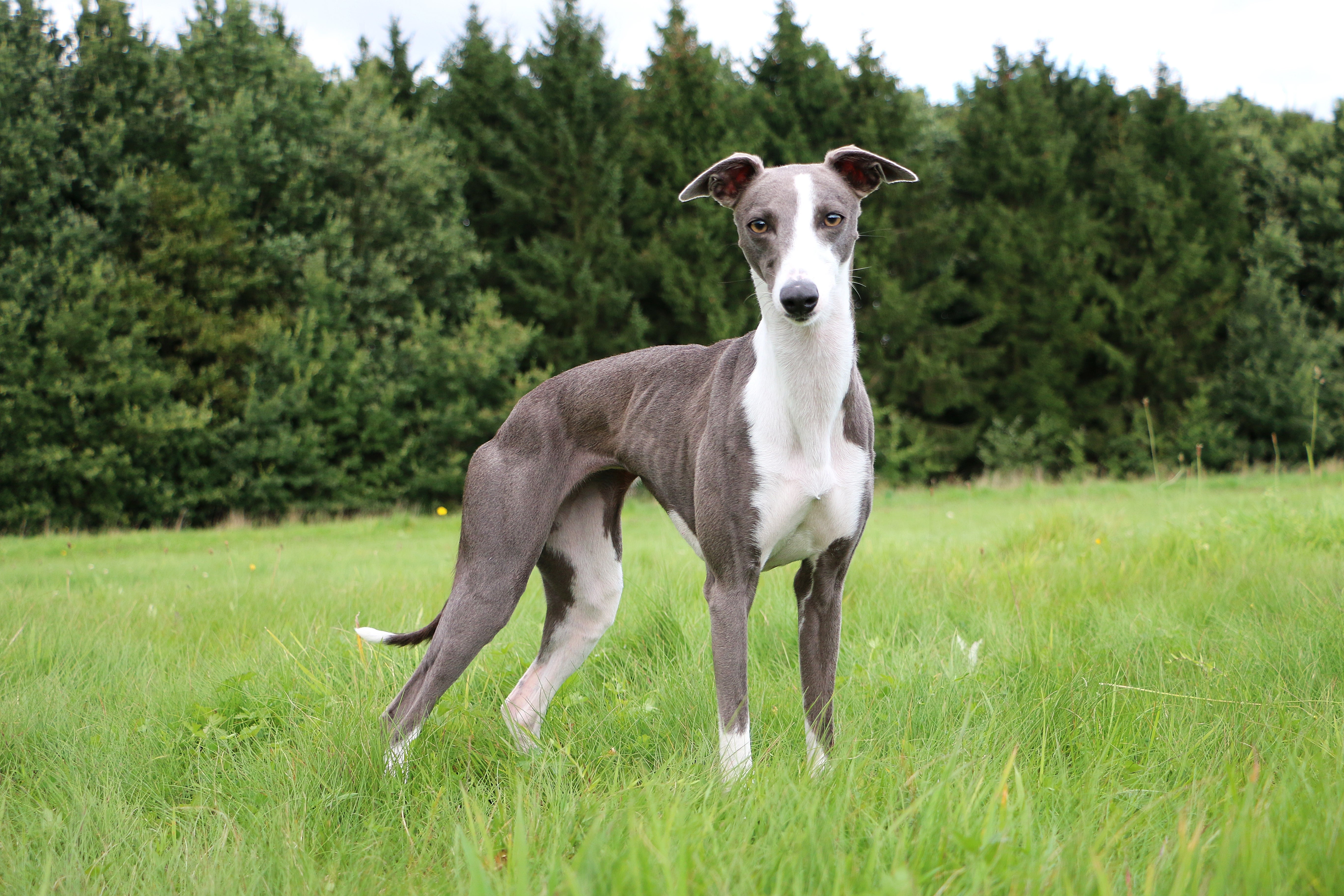Whippet
Whippets are lean, muscular athletes built for sprinting, with sleek lines that belie their surprising power. Graceful and agile, Whippets boast a short, fine coat available in a rainbow of colors. They’re a dog that can be a blur when running and a cuddle buddy on the couch.
Breed characteristics carousel
Learn More
Need to Know
- Dog suitable for owners with some experience
- Extra training required
- Generally healthy breed
- Enjoys vigorous walks
- Medium dog
- Minimal drool
- Requires regular grooming
- Chatty and vocal dog
- Barks and alerts to visitors/anything unusual
- Generally friendly with other dogs
- May need additional training to live with other pets
- May need additional supervision to live with children
- Needs a small yard or can happily live in the city
- Can be left alone occasionally with training
- AKC Registered Breed

Personality
Quiet and devoted, Whippets are the most outgoing and amenable of the sighthounds and have a reputation for being gentle with children. They are calm and quiet indoors but love a good romp outside to get the zoomies out. They can be sensitive mentally and physically and need to be handled gently and with love.
To get the Whippet, Greyhounds were mixed with terriers to enhance speed and rodent-catching abilities. The Industrial Revolution refined the Whippet. Masses of farm workers moved to cities, bringing with them these small dogs. Whippet owners took immense pride in their dogs, sharing rations with them and often children’s beds. They were valued as companions and admired for their aesthetic appeal. Their popularity was slow, but the combination of lithe elegance and gracious companionship had won many over.
If you don’t mind sharing your bed, don’t mind a bit of fussiness about the weather, and don’t mind keeping a doggy wardrobe, the Whippet could be for you. It’s easy to forget that these dogs were originally bred as hunters, but they were, which means that you’ll need time and patience to ensure your Whippet has good recall and doesn’t pose a risk to backyard animals. They’ll reward you with cuddles galore and adoration, especially if you allow them to burrow in under the duvet with you.
Whippets are capable of short, sharp bursts of fast running but they can run for endurance, too. About an hour of vigorous exercise per day works for them.
While Whippets need space to run, they are happy with any size home so long as there is a comfy sofa within a paw’s reach. They do need access to outdoor space for potty time and daily exercise.
Soft brushes, gentle handling, and early exposure can help your Whippet be successful at grooming. Their skin and coat are fine and sensitive, and only gentle or specially formulated shampoos should be used.
You might get some side eye from a Whippet while training, but they are capable of learning basic obedience, including walking on a leash or harness. Recall is important, although it can’t be relied upon as these instinctual sighthounds will often abandon obedience in favor of the thrill of the chase, even if it’s only a yard squirrel.
Affectionate, affable, and adaptable, these gentle dogs are good with children and make good family pets. They like participating in family activities and are calm indoors. They love to socialize and have never met a stranger.
The cost of a Whippet from a breeder is significantly more than the cost of adopting one from a local shelter or rescue. The adoption fee usually covers additional items such as spaying or neutering, vaccines, and microchipping.

Learn more about feeding and caring for your Whippet on Purina.
Did You Know?
- The Greyhound is the fastest dog on Earth, but the lighter Whippet can hold its own, reaching top speeds of 35 mph.
- Sweaters aren’t just fashion statements—these dogs have very little body fat and sweaters can help warm them up when it’s cold out.

